
Explore some of the areas where we can help you and your loved ones find health
Close
Most people think of the birthing process as being extremely difficult on the mom, but no one thinks about how hard it is for the newborn. Newborns have soft and malleable bones designed to overlap and glide over each other, enabling them to pass through the birth canal. In normal births, the process of eating, breathing, and crying helps move the bones so they have freedom of motion, but sometimes the bones remain restricted. This is where an Osteopath can help.
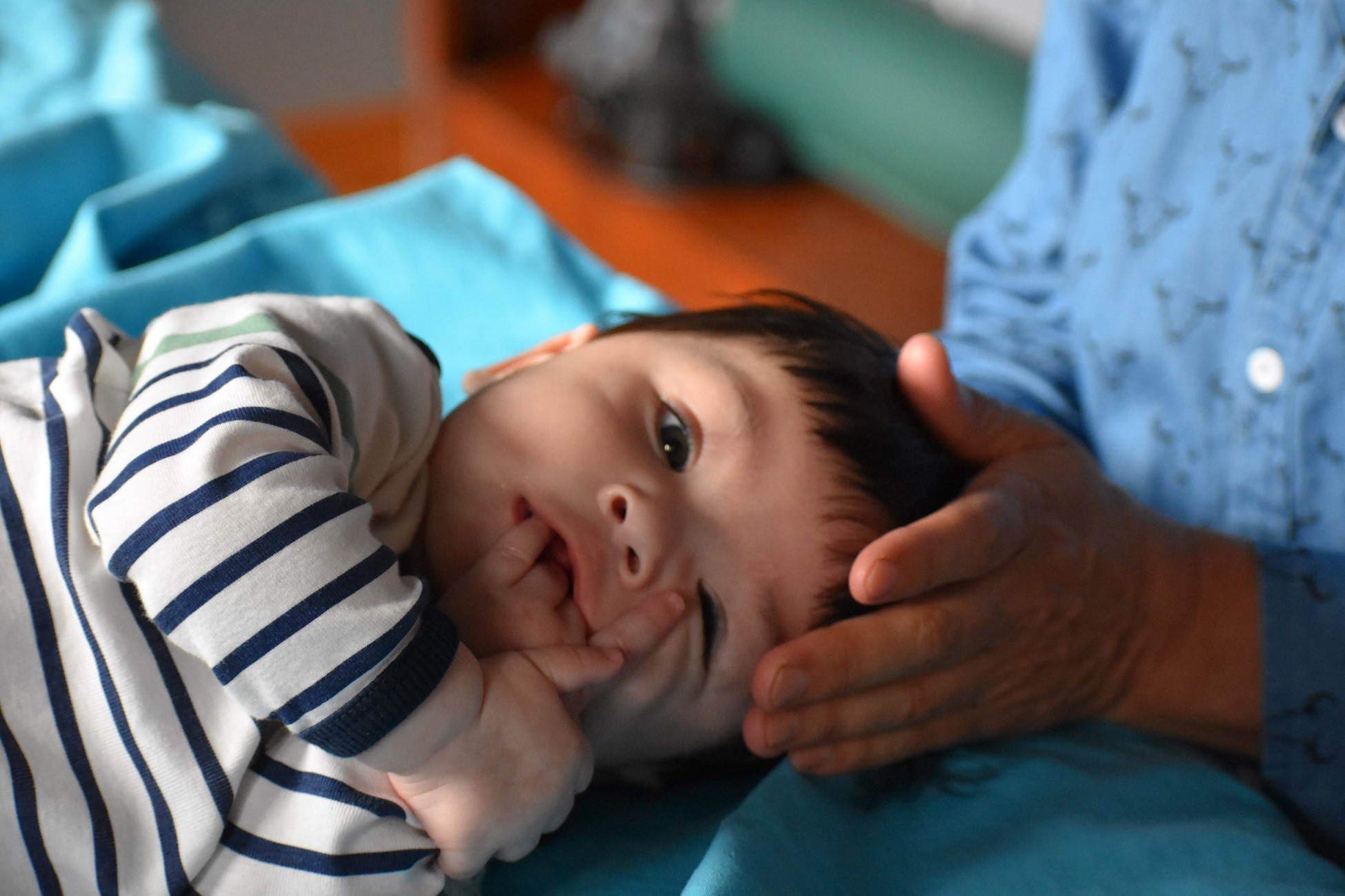
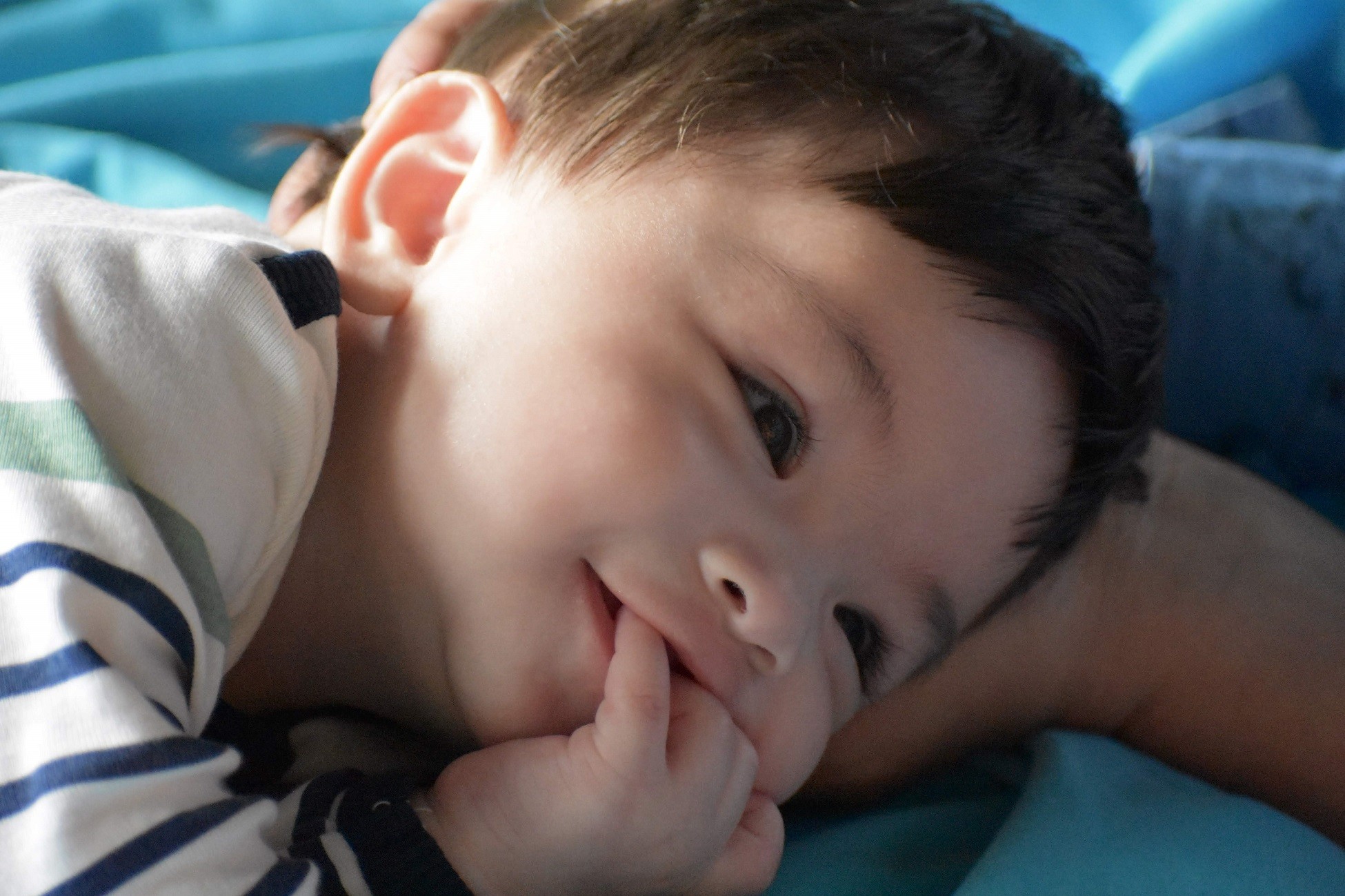
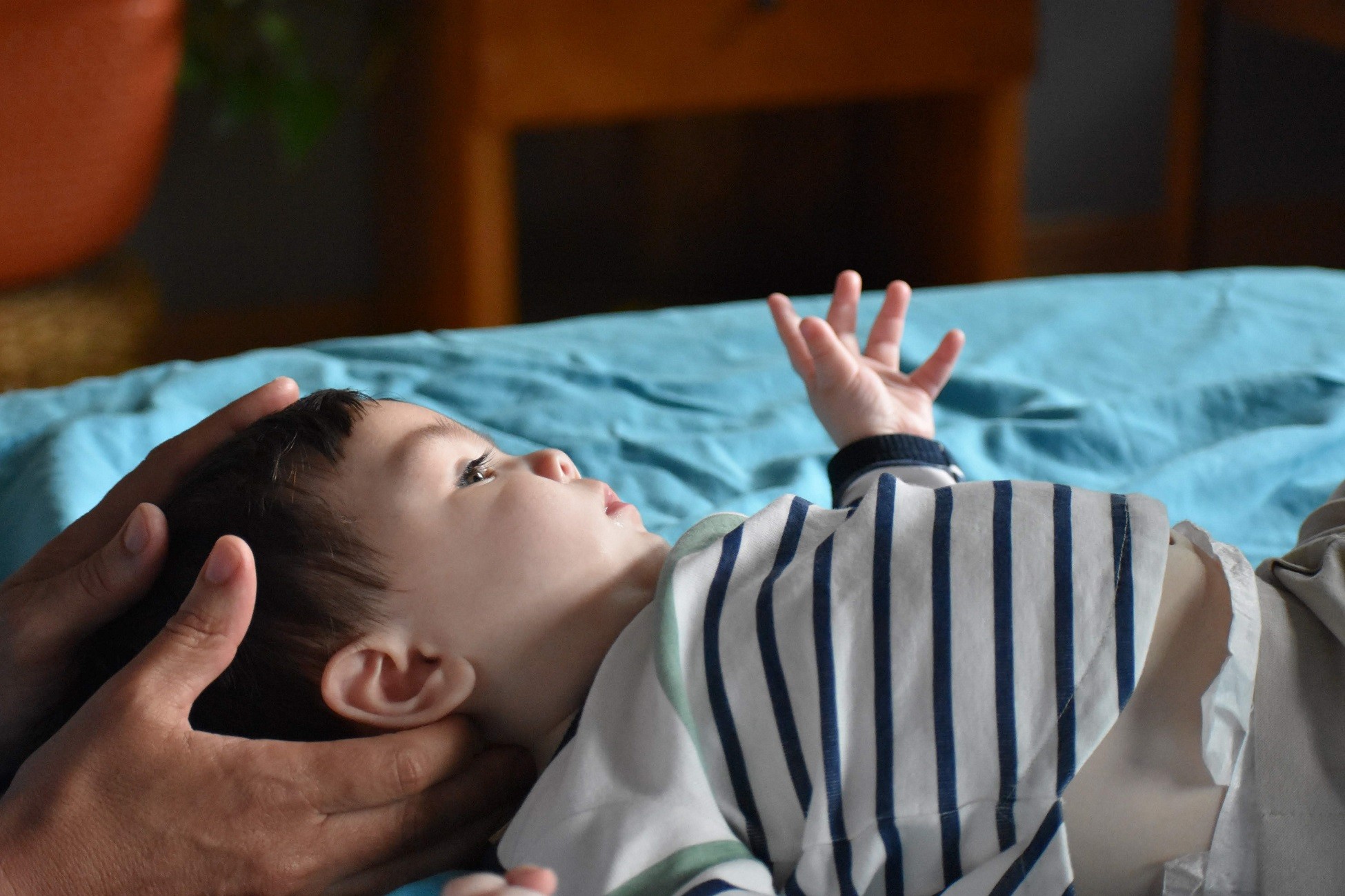
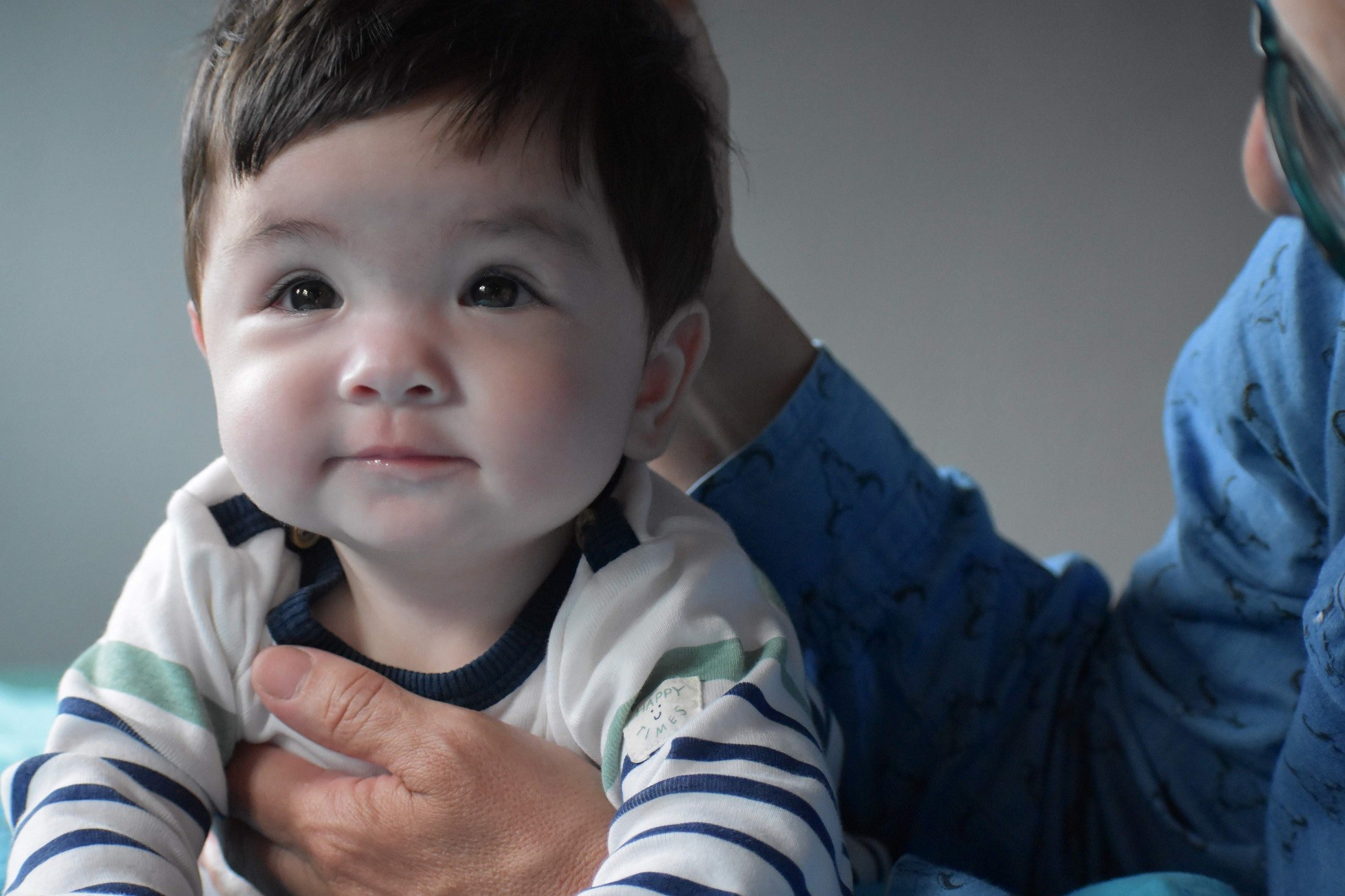
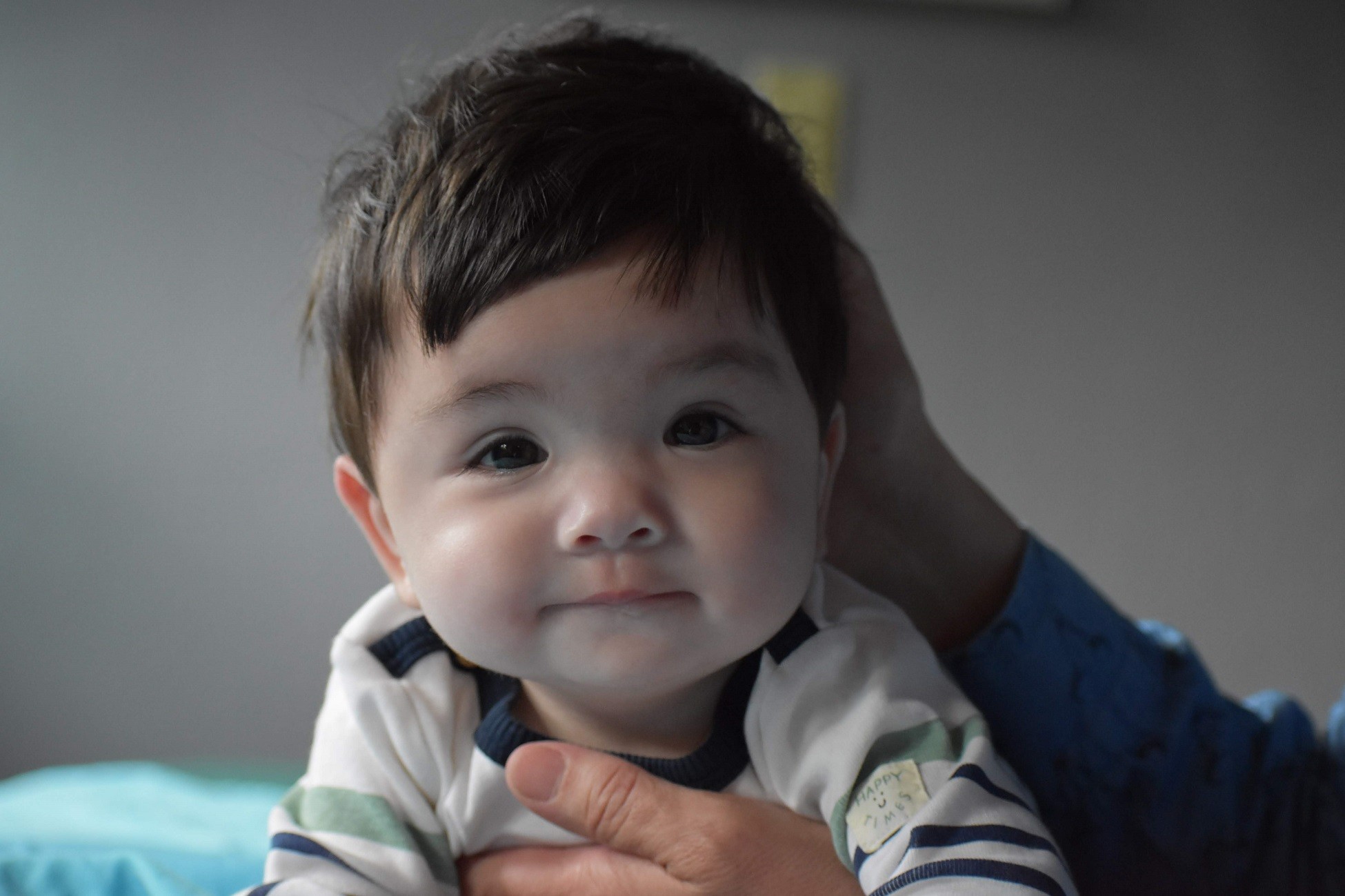
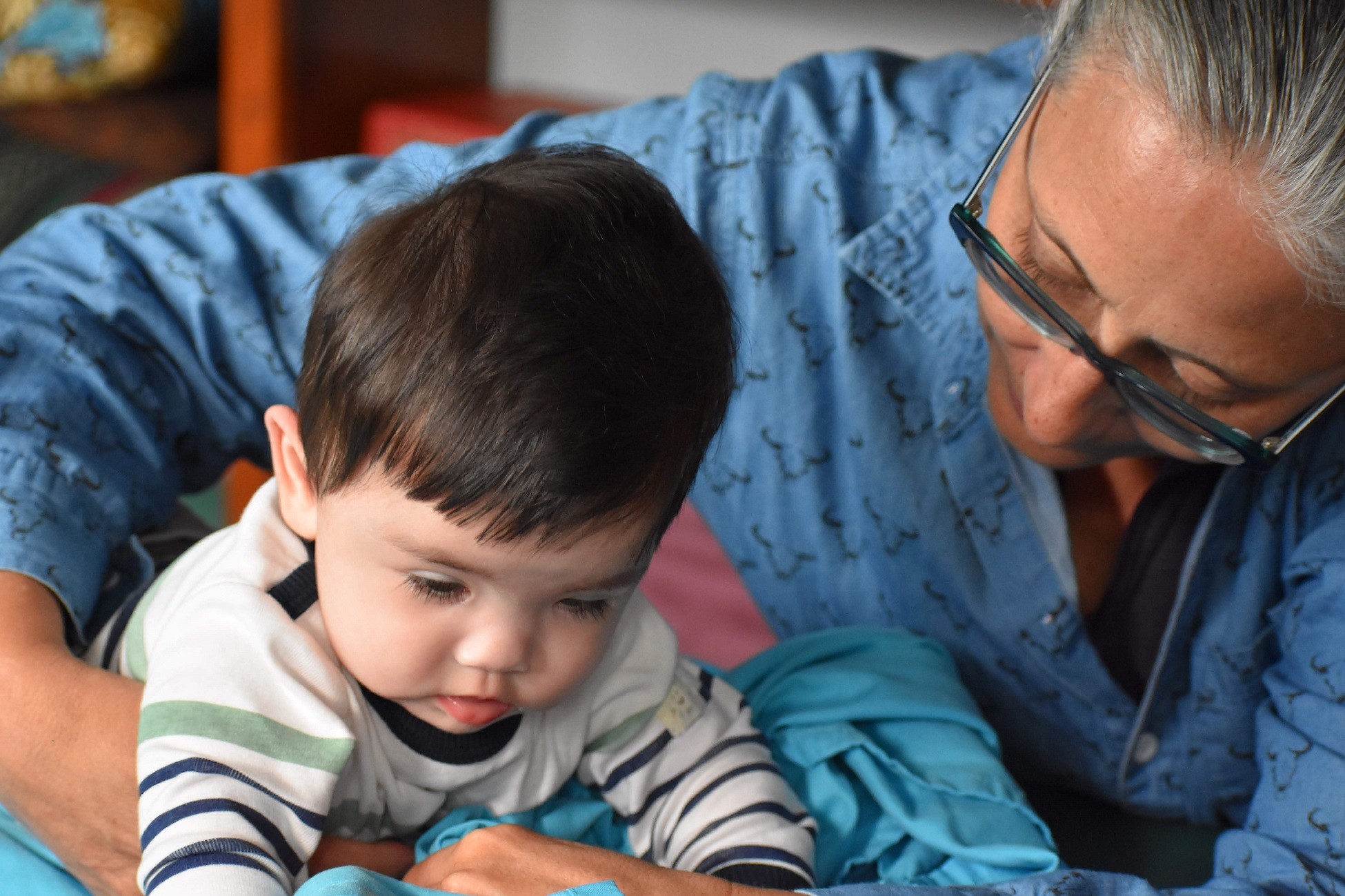
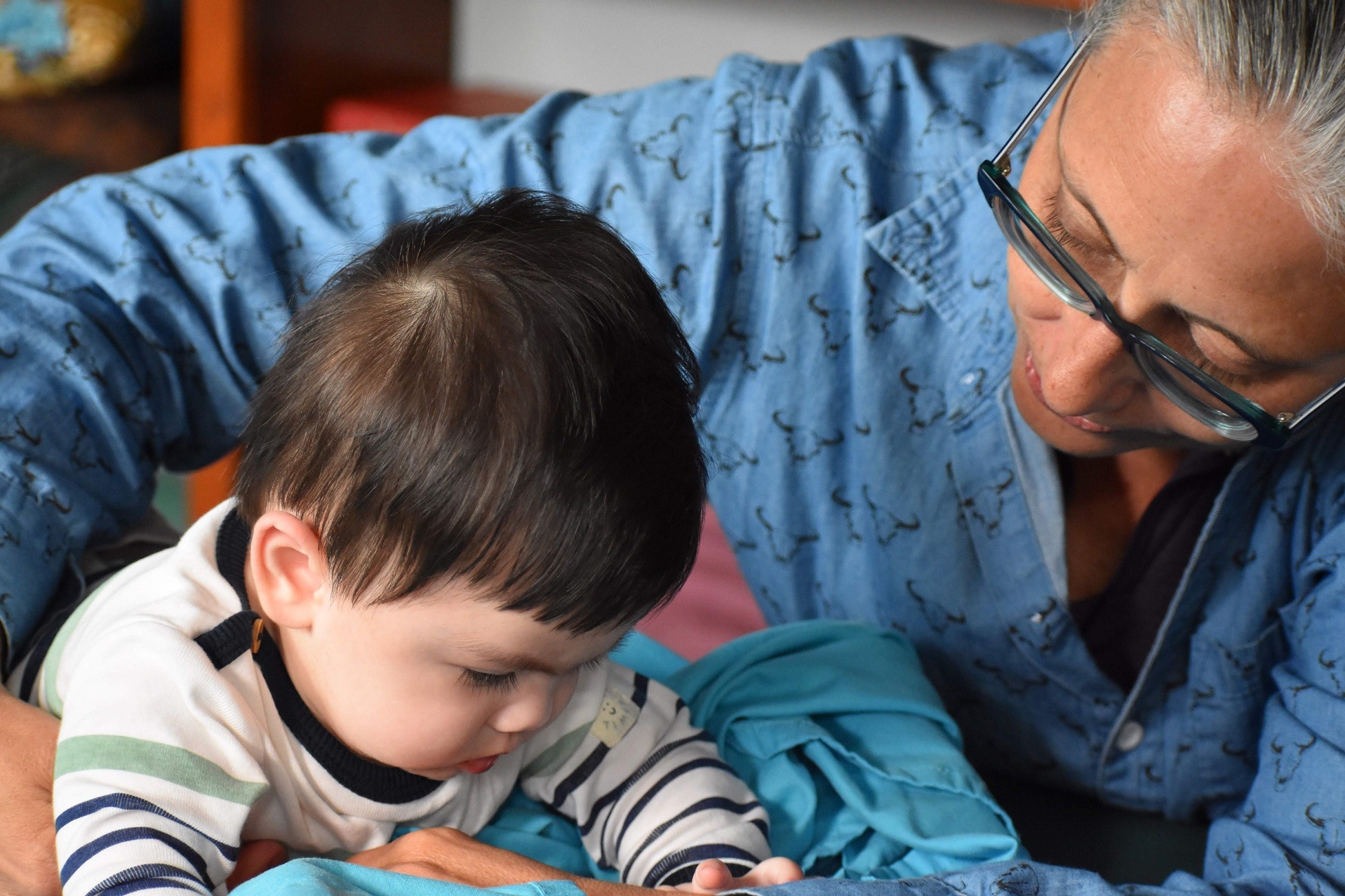
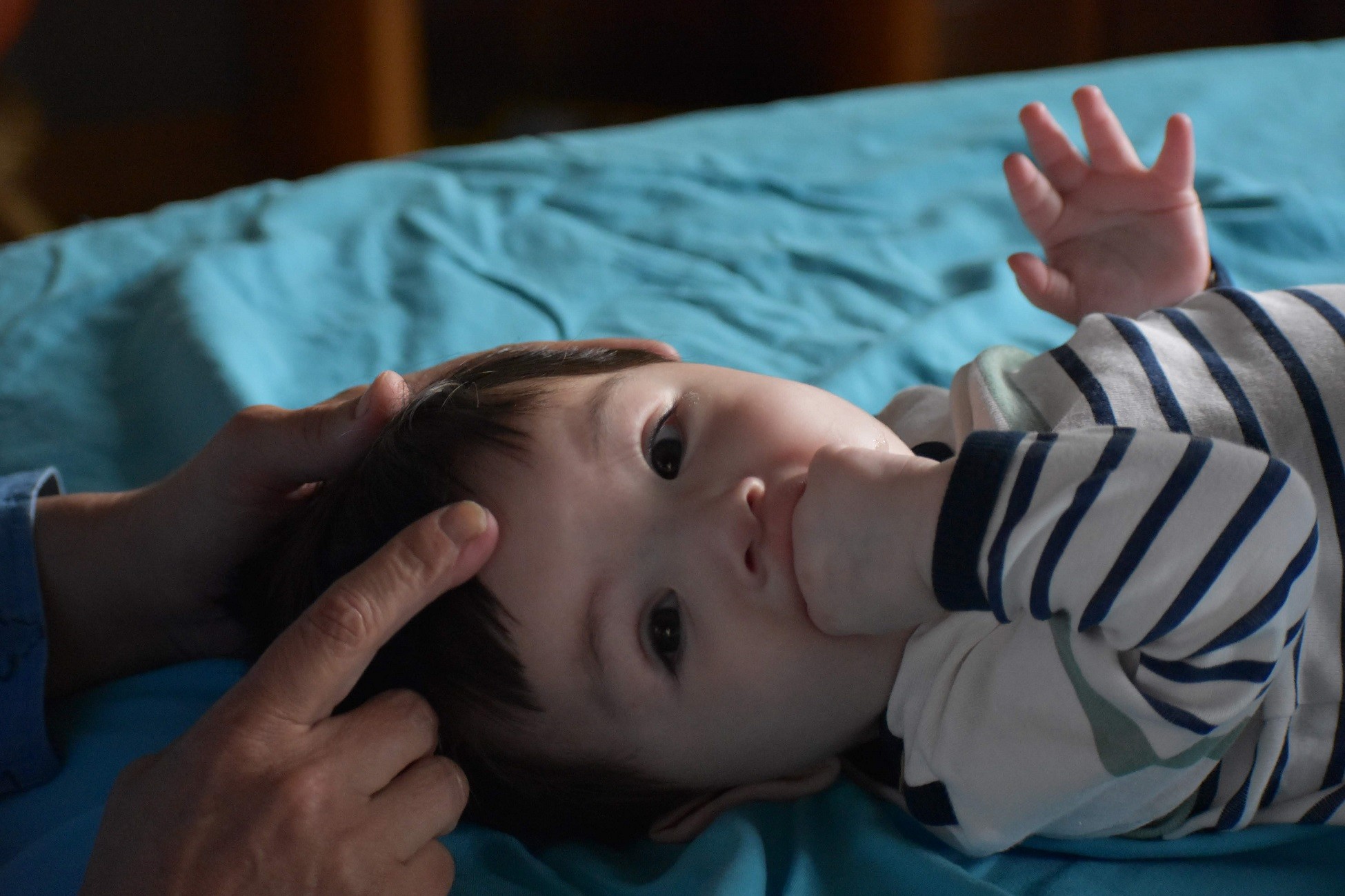
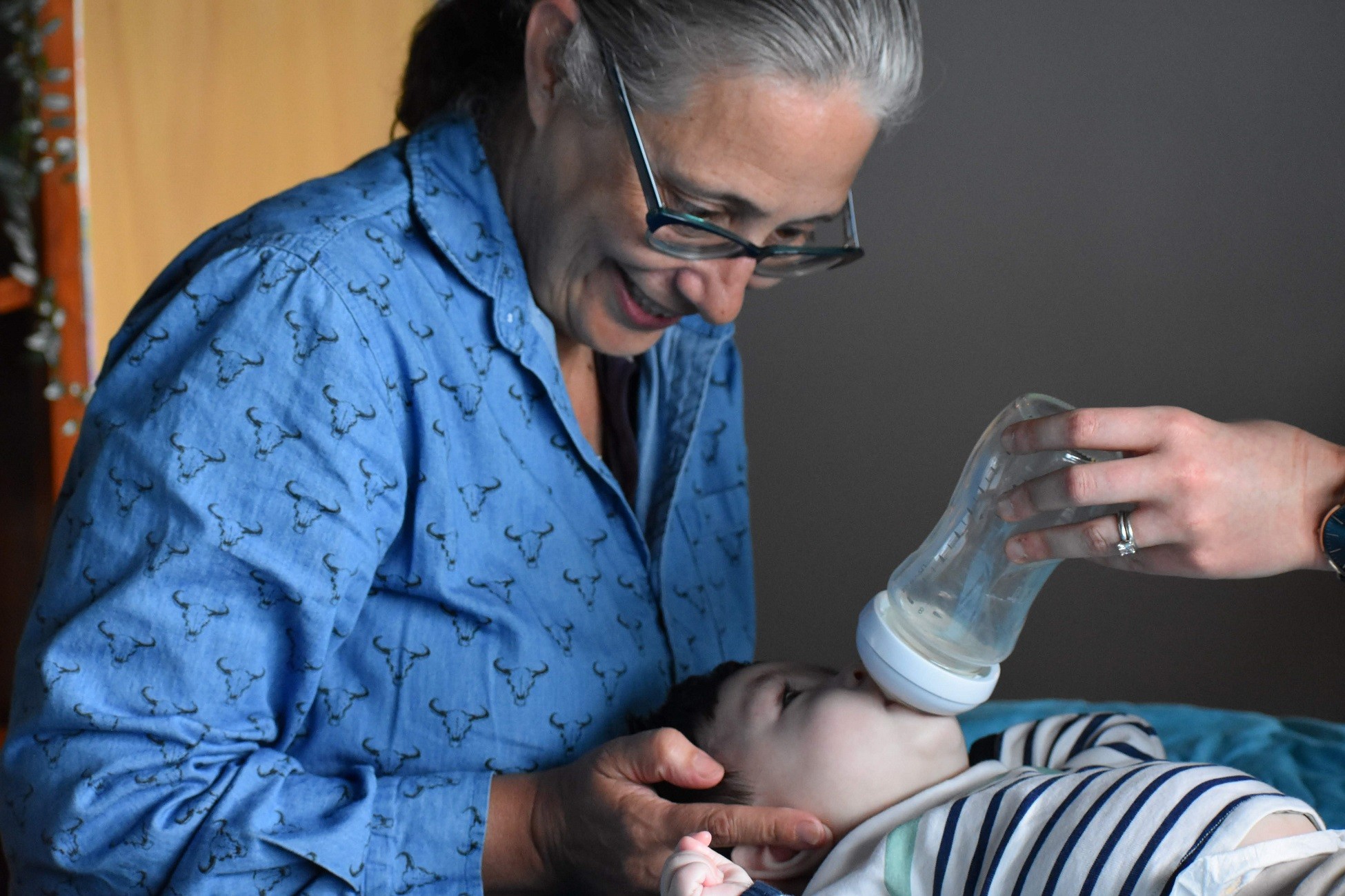
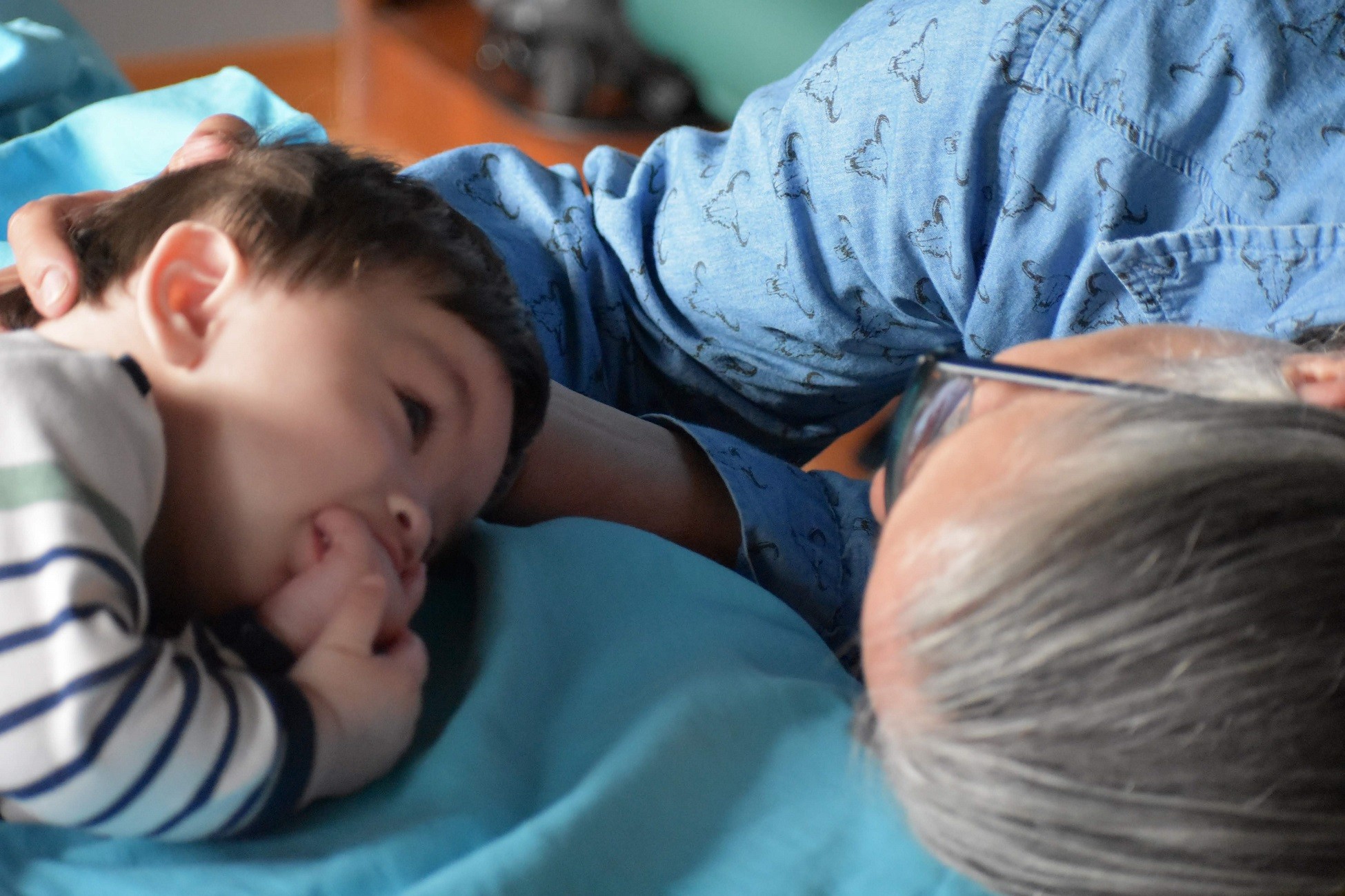
Osteopathic Treatment in Newborns is completely safe and gentle. Moms
enjoy watching their babies relax while we gently hold them in a way that allows their
tissues to express normal motion. This ensures that the minor strain will not become
magnified as the tissues multiply and grow. Left untreated, there remains a risk of
long term consequences.
For more information you can find some of our patient stories below.
Parker was born “sunny-side up”. A vacuum was required in his labor. He was born with bruising on the back of his head due to the vacuum. During the first few weeks of his life, he would not lie on his left side and developed a flat spot on his head. Shortly after birth, his head circumference was in the 5th percentile. After about 4 months of OMT treatments, Parker's head is now in the 60% percentile and he is developing as a happy health toddler.
Connor's mother brought him to see me because he was unable to turn his head to the left. In my training I have learned to treat infants as a whole rather than focusing on individual parts. By treating his nervous system as a unit of function, and using a myofascial release technique, I was able to resolve this torticollis. After the first visit his left cervical rotation improved by 30% and by the second visit his torticollis was nearly completely resolved.
When the mom’s whole body can move freely the entire process of getting the baby
positioned correctly, starting labor, and pushing the baby through the birth canal
will flow more freely. Osteopathic treatment strives to make sure that mum’s head,
spine, and pelvis can move freely. This allows the blood to flow more easily and
balances the hormonal and nervous systems.
Before birth we can help with:
During the period after birth we prefer to treat mum and babe together. We can help the mother’s body return to normal, make nursing easier, and resolve strains associated with carrying baby around. We can also offer guidance with gentle stretches and exercises. For more information you can find a patient stories below.
Vanessa, a 33-year-old in the 37th week of her third pregnancy, carried and delivered her first two children without complications. When she came to our office, her baby was in a breach position (instead of head down, it is positioned butt down in her womb.) She tried acupuncture, but resisted hospitalization and treatment by her obstetrics and gynecology physician out of concern for side effects. I used OMT to help balance Hope’s pelvic floor. During the procedure she felt relaxed, as did her baby. Six hours later when Hope visited her ob-gyn, the baby had positioned itself normally. Six weeks after that, however; Vanessa still hadn’t delivered her baby. She wanted to avoid induced labor, and came to me again. The second treatment helped Hope begin normal contractions later that day. Three days later, Hope returned because her newborn wasn’t nursing. To the lay observer it simply looked as if I held the baby’s head in one hand, and its pelvis in the other. The baby drifted into calm sleep. Only later did the baby show the more vital benefits of treatment by beginning and continuing to nurse normally.
Its natural to be concerned about your child's development. As parents, we
want the best for our children, and we want to make sure they can thrive and
grow. As children's bodies and minds rapidly change, restrictions and limitations
can be caught and treated early. Often, there is nothing to worry about.
A few osteopathic treatments can help ensure your child has optimal mobility,
strength, and balance. For other children, a more specialized program is needed.
We can help develop the team to make sure your child gets the care they need.
Osteopathic Treatment for Children can help with:
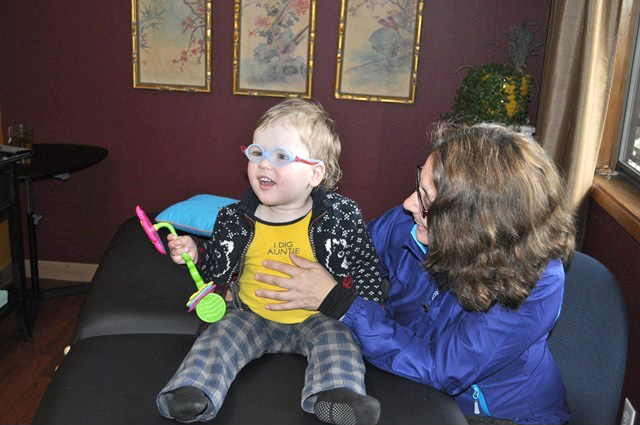
For more information you can find some of our patient stories below.
Ryan was brought to my office when he was 12 months old. His mom communicated that he had been on antibiotics more often in his life, than not. Though his birth was essentially normal, they did need to use a vacuum to get his head out and for the first 2-3 months of life, he had a “pointy head.” I explained to Ryan’s mom how the temporal bones house the ear and if all of the bones in the skull cannot move freely, this can cause problems. The Eustachian tube, which drains the middle ear is more horizontal in kids and therefore does not drain as well in adults. I treated him once a week for a month and then every other week for a few months. They called me the relax doctor because he always looked forward to lying on my table and relaxing. He did require one more course of antibiotics after a pretty bad cold when he was two, but other than that Ryan is a happy and healthy kid.
Nate came to see me at 2 years old with severe developmental delay. He couldn’t even stay sitting up if mom propped him up on pillows. He did not make any type of noises or appear to understand language at all. His mom sought the help of every expert in both Portland and Seattle, resulting in a variety of diagnoses – cerebral palsy, autism, and several other “syndromes.” His mom was very surprised when after my first treatment, Nate appeared to be much more in control of his muscles and although he didn’t sit up right away, he seemed “more comfortable in his body.” I treated that adorable child every week for 18 months, after which they confidently moved to California. Nate was now walking normally and beginning to put sentences together. He came back to see me a few years ago at the age of 10 and was doing great. His mom described his personality as maybe a little odd, but he was keeping up in all of his classes at school and hadn’t the need for speech therapy since the age of 8.
Here at insight Osteopathic medicine our goal is to help patients walk away
from their accident better than they were before. By treating your musculoskeletal
system, and helping you develop new lifestyle habits, we work with you to help
turn your accident into the first step for a new, healthy life.
Our treatment plan includes:
We are committed to helping you get your health back on track. You can find two of our patient stories below.
Danielle was a former patient of mine who had the advantage
of knowing the positive effects OMT can achieve on injuries, so she came to see
me right after her MVA. She experienced severe neck pain, but even worse, was
unable to think without effort, had trouble remembering things, and her speech
was slow and halting. We discussed the forces that caused her neck strain—the
forward force and then sudden back lash – whiplash, as it is named for the
sharp return lash of the whip. These same forces can cause the soft tissues
of the brain to swish and bang against the hard surface of the skull, resulting
in brain bruising or a concussion. Danielle had a full evaluation by a
neuropsychologist and learned that she comprehends new information more easily
if she hears it, rather than reading it, a method she still implements.
After weekly OMT for about a year Danielle continually showed signs of improvement.
Following many of her treatments, Danielle called her husband so he could hear
how much better she could talk. In addition to her OMT, Danielle received weekly
massages for 6 months, then alternated between OMT and acupuncture. Ten years
since her MVA, Danielle estimates a 90% improvement over her symptoms.
Dave a 36-year-old man experiencing persistent neck pain and stiffness after an MVA six months earlier. X-rays and other imaging tests showed no structural causes. He tried everything: Non-steroidal anti-inflammatory drugs, rest, physical therapy, massage— nothing worked, and the pain and stiffness persisted. Hoping for relief and a return to normal activity, Dave visited our office. He underwent OMT once a week for three months and his condition gradually improved. Treatment involved “very subtle hands-on treatment,” or “gentle touch.” In Dave’s case, I helped identify a spinal imbalance caused by the accident, then held the misaligned vertebra “in a position where it is freest to move, to facilitate the reorientation of the ligaments.” As a result, Dave was able to reduce the frequency of treatments. Six months later, Dave’s pain and stiffness were gone, and he was released from care.
For patients who have had a traumatic brain injury or concussion, life can be challenging. One of the important symptoms is a sense of feeling lost – as if they aren’t the same person they were before the injury with little clue how to get back there. At Insight Medicine, we have seen many highly functioning people who suddenly having trouble getting through the day. Headaches, mental confusion, visual difficulties, dizziness and mood changes all make tasks that used to be simple, now seem strenuous. With persistent osteopathic treatment, including cranio-sacral treatment, and the appropriate referrals and support, many of our patients have returned to more of there pre-injury self. It can take a while but with the comprehensive approach to TBI that we offer, patients can experience relief from many symptoms including:
For more information you can find a patient story below.
Veronika, a highly functioning person who was having
trouble getting through the day let alone a whole week – headaches,
mental confusion, visual difficulties, dizziness and mood changes prevented
her. With persistent osteopathic treatment, including cranio-sacral
treatment, the appropriate referrals and support she now has returned
to more of her pre-injury self. It’s taken a while but with the
comprehensive approach to TBI that we offer she now has less nausea,
dizziness, headaches and is getting complemented at work.
Most people in Western cultures tend to associate certain therapies as helping only certain health problems. Osteopathy’s reach is nearly unlimited because it works to strengthen and restore the body’s own powerful healing ability. All cells of the body require nutrients, waste removal, and nerve communication to function properly. When the body can do these tasks unencumbered, it is healthier. Osteopaths free up these pathways, allowing the body to do what it does best-heal and maintain itself. At Insight Osteopathic Medicine, we treat all ages. You'll find a list of some of the more common problems we treat below. Click on an area below to see some of our patient stories.
Mark was a 9 year old boy who was referred to me by a institute that helps families who have children with developmental delays. As a baby, Mark fell down a flight of stairs causing a divot on his head. As he aged, he began to miss some developmental milestones. His speech was delayed, and he was consistently a year behind in school. I identified a number of restrictions in his cranium and treated him every month or two for about two years. He now performs well in school, is active socially, and happily playing sports.
Osteopathic Treatment for Children can also help with:
Parker was born “sunny-side up”. A vacuum was required in his labor. He was born with bruising on the back of his head due to the vacuum. During the first few weeks of his life, he would not lie on his left side and developed a flat spot on his head. Shortly after birth, his head circumference was in the 5th percentile. After about 4 months of OMT treatments, Parker's head is now in the 60% percentile and he is developing as a happy health toddler.
Other problems during the newborn period that we can help with include:
Connor's mother brought him to see me because he was unable to turn his head to the left. In my training I have learned to treat infants as a whole rather than focusing on individual parts. By treating his nervous system as a unit of function, and using a myofascial release technique, I was able to resolve this torticollis. After the first visit his left cervical rotation improved by 30% and by the second visit his torticollis was nearly completely resolved.
Other similar things we treat include...
Ashley was a 45 year old woman who came to my office with sciatic pain radiating down the back of her leg. She had this pain for about a year. After seeing multiple physicians, nothing helped. During my first visit with her I diagnosed her with a tight piriformis muscle and showed her a number of stretches to relax this muscle. After she did these stretches for a few weeks, her sciatic pain had completely resolved.
Osteopathic Treatment for adults can also help with:
James was a 9 year old boy who had two scoliotic curves in his back. I was able to diagnose him with strains in his abdomen, pevlis and spine. After treating these areas over the course of about 5 months, along with continued chiropractic care, both of his scoliotic curves resolved.
Nathan was a 11 year old boy who came to see me with complaints of a lumbar scoliotic curve. As an osteopathic physician, I am trained to consider the health of the entire body, and not just the lesion. Over the course of 5 months I found various restrictions in his cranium and shoulders. Combined with PT and chiropractic care, Nathan's scoliotic curve is now nearly resolved. He is very active with sports at school.
Osteopathic Treatment for Children can also help with:
Cindy was a 24 year old female who came to me with complaints of anxiety. Osteopathic training often associates anxiety with a dysfunction in the Primary Respiratory Movement (PRM) of cerebral spinal fluid. A common technique to facilitate extension in the PRM is called CV4 technique. Cindy reported that after each treatment her anxiety would be immediately better for a short time, and gradually her anxiety improved to a manageable level.
Osteopathic Treatment for adults can also help with:
Veronika, a highly functioning person who was having trouble getting through the day let alone a whole week – headaches, mental confusion, visual difficulties, dizziness and mood changes prevented her. With persistent osteopathic treatment, including cranio-sacral treatment, the appropriate referrals and support she now has returned to more of her pre-injury self. It’s taken a while but with the comprehensive approach to TBI that we offer she now has less nausea, dizziness, headaches and is getting complemented at work.
Grant came in after seeing a chiropractor for neck pain for quite some time. The treatments would help, but inevitably the pain would return. During Dr. Stason’s exam he noticed that when his eyes were closed much of the strain in his neck would lessen. However, when he opened his eyes the strain increased significantly. With further investigation Dr. Stason noticed his glasses seemed to be the cause of his neck strain. Dr. Stason worked from his optometrist's prescription to determine a new eyeglass prescription that did not lead to cervical strain and this has lessened his neck pain ever since.
Ann started having migraines as a teenager. She saw specialists across the country and took a variety of medications. Menopause caused a severe spike in her migraines. Her head pain was so severe that she was forced to spend most of her time in a darkened room. The first time Ann laid on my table I was able to palpate her nervous system and recognized a restriction in her brain. As I quietly sat with my hands on her head it felt like a door had been opened and the pain poured out of her head. Ann has had an excellent response to OMT and in addition to alleviating her migraines, her chronic low back pain, shoulder girdle pain and insomnia have all resolved with OMT.
Jose, a 16 year old boy never had a complaint until early this year when he started having headaches once or twice a week with pain level as high as 8 out of 10. His grades began to suffer and around the same time, he started having trouble with his friends. I diagnosed a strain in his pelvis which was restricting the range of motion in his upper back causing increased tension extending into his neck and head. The boy had a combination of cervicogenic headaches (meaning coming from the neck) and allergy related sinus pressure. During a 4-week elimination diet, we also discovered a wheat allergy. His neck pain and headaches resolved after a strain in his pelvis allowed more ROM change to range of motion throughout his upper back and neck.
Jan was referred to me from her optometrist for double vision and headaches. In our waiting room, she experienced shortness of breath while at rest. Jan had seen multiple allergists and pulmonologists, all of whom expressed marked concern about her state of health, but none of whom offered any solutions. Our first 45 minutes was dedicated to assessing that her symptoms began about 6 months after she welcomed a new cat into her house. For health purposes, the cat had to find another home. We then worked on her food allergies for about 6 months, at which time I referred her to an ENT for surgery of her chronic sinusitis. With these changes and OMT once every 2-3 weeks for 18 months, Jan's headaches completely resolved and her chronic SI pain no longer kept her from enjoying hiking and biking, her favorite activities.
Larry, an active 72-year-old retiree experienced vertigo, which limited his yoga regimen and infringed upon his lifestyle. A fall from a cliff five years earlier had precipitated a see-saw of vertigo—severe at first, then abating after three days, remaining at bay for the next three years, then progressively becoming debilitating in the two years prior to contacting my office.
He wanted to drive his car. He wanted to attend his yoga class three days a week. He wanted to be able to raise his hands for over his head without them going numb.
After a thorough physical exam including some orthopedic tests, I concluded that in addition to the vertigo, Larry suffered from thoracic outlet syndrome. Essentially, his first (top) rib was impinging the blood flow to his arms. OMT eased both conditions, eliminating the vertigo and improving circulation to alleviate the numbness in his hands. As a result, Larry was able to resume his normal activities.
Denise led an active life with multiple minor strains occurring in her 20s and 30s, but did not have a chronic complaint until she woke up one morning unable to move her neck. After watching her walk, I diagnosed a postural imbalance from the strain in her leg, and following her first treatment, came up with some very specific stretching techniques and suggested a specific shoe to wear. She was surprised that her first treatment was so subtle, but noticed a feeling of relaxation and warmth in her leg and low back. She is quick to implement her stretching exercises, especially before and after a long trip or when life stressors cause increased soreness. Denise is now back to enjoying her active life—pain free.
Susan came to see me when she was 18 with the diagnosis of failed back syndrome. She had back surgery 3 years prior, prompting post laminectomy syndrome 2 days after surgery, where she awoke with a 10 of 10 pain level. After her first osteopathic treatment, Susan’s bladder symptoms of urgency and frequency resolved, but it took a few months for her pain to decrease. In our discussion about how pain affects the way your brain functions, I stressed the importance of recognizing that pain is not a warning sign of something dangerous, but that your brain is just “keyed up.” After watching G. Lorimer Mosley on Ted talks, Susan was able to separate her pain signals from her reaction to the pain, from which the suffering originates. I treated her once a week for 2 years and then every other week for about a year. Susan revisited me 5 years later, after wrenching her back. I learned that during those 5 years, she experienced a low grade ache, but all-in-all, lived a normal life. Susan enjoys water skiing, snowboarding and other activities, and her new friends never even knew she had suffered from back problems.
Sally fell flat on her back 30 years ago and was 'hobbled up' for weeks, but forgot all about it after recovery. Three years later in college, she twisted her back and knee during a skiing accident. Chiropractic treatments and physical therapy alleviated about 90% of her pain, but Sally still noticed some increased soreness after long plane rides or when she became anxious or stressed. Five years later, she fell off of her bicycle, which resulted in a chronic low grade ache right in the middle of her back above the belt. Sally had regular treatments once a week over the next few months. She consistently left my office feeling the same but would have significant relief a few hours later. I prescribed very specific stretching techniques, which she implemented twice a day for about a year. She still does her stretches before and after long flights or car rides, but otherwise lives a normal pain free life.
Wes is a 49 year old male who first came to see me 5 years ago. He initially hurt his back 25 years prior playing high school football and his back has had a chronic low grade ache ever since. A few times a year his back “goes out” and forces him to lie on the floor for a few days followed by limping around for a couple of weeks. Every time he started an exercise regimen, his pain skyrocketed. He saw me once a week for about 6 months and his pain decreased by about 70%.
Trinity was stopped at a light when her car was hit from behind hard. Prior to this accident she had chronic neck and upper back pain which had been keeping her from restorative sleep for about 20 years. These symptoms were much worse after the accident. Unable to turn her head to look over her shoulder, she also had some new poorly defined numbness in her hands. Her neurological exam had some concerning findings so I ordered an MRI which thankfully was completely normal. We decided that weekly OMT with some acupuncture and massage added in occasionally would be the optimal treatment plan for Trinity. Nine months later her chronic issues, including her sleep, were better than they had been in 20 years. I saw her a few years later and she was happy to report that “her chronic pain was still better since her treatments”.
Neal woke up one morning unable to turn his head to the left without intense pain. He was also having burning pain throughout his right shoulder girdle. Neal came to see me a few weeks later when it didn’t resolve. He lied down on my table while I gently cradled his head with my hands, he immediately noticed some relief. Over the next few days he gradually felt 90% better. I saw him a few more times to address some flattening in the curvature in his upper back to hopefully keep this from happening again.
Chris was involved in a 6 car pile-up on I-84 during a snow storm and was life flighted to OHSU. Luckily they found no fractures or injuries to his internal organs. However, he was experiencing a lot of pain especially in his low back. By the time that he came to see me 6 months after the accident he was taking handfuls of narcotics just to make it through the day. Most of his low back pain resolved after 9 months of weekly and then bi-weekly treatment.
Over the years he came in a few times when his back would hurt after putting up fencing or lifting too much. It would take a few weekly sessions to get Chris back to feeling normal. I last spoke to him early this year. Chris reported he has not had any symptoms for 5 years but was calling for a friend who recently hurt his back.
Jane is 46-year-old woman dealing with chronic shoulder pain. Happy in her second marriage, Jane has two children, but for more than 30 years suffered severe pain in her right shoulder. The pain had increased so much that she couldn’t even do basic household chores. Her first visit left her feeling peaceful, but the pain persisted and she returned for more treatment. At her second treatment, Jane broke down in tears as she remembered the emotional stresses of her first marriage. During an argument with her first husband, she strained her shoulder while struggling to install a baby seat in her car. She had carried the emotional scar of that troubled marriage for three decades.After her session of OMT, Jane felt her shoulder pain dissipate and return to normal movement. Since that day, Jane’s shoulder has continued to function normally and without pain and no more treatments were needed.
Robert filed a WCOMP claim for a shoulder strain 2 years before visiting my office. The shoulder pain was much better after a course of physical therapy, but did not completely resolve. By the time he came to see me, his primary symptoms were elbow pain, which I diagnosed as epicondylitis or tennis elbow, and some numbness in his fingers, which I diagnosed as carpal tunnel syndrome. His WCOMP insurance denied these new conditions, but Dr. Sacon worked with Robert’s lawyer to fight the issue. She referred them to a few experts to corroborate Robert’s argument with the IME. They additionally required nerve conduction studies. With Dr. Sacon’s assistance, the new conditions were approved and treatment commenced.
We began by discussing Robert’s ergonomics at work, helping him recognize that his work station was too high for him and that his computer mouse was too far away. We corrected these issues and got him some ergonomic gloves and a new lateral mouse. It’s been 10 years since the original injury and although Robert’s symptoms are better for 7-10 days after OMT, they always return after a full week of work. To offset his symptoms, Robert wears a brace on his elbow at work, and braces on his wrists when he sleeps. Markedly increased symptoms occasionally surface after working overtime or doing hard physical labor around the house, but short courses of OMT, physical therapy, and acupuncture alleviate these flare ups. Though he continues to experience symptoms, Robert is able to participate in full recreational activities and sleep soundly without problems.
Ken sought help for an acute shoulder strain. After my examination I ordered an MRI and recommended surgery. OMT is not always the answer, but it is still best to seek a second opinion when considering surgery, as many times it can be avoided.
Sherryhad post-surgical pain after surgery to repair a hernia in her groin. As soon as she awoke from surgery she knew something was terribly wrong. Her pain was a 9 out of 10. She suffered with this pain for a few years despite multiple PT appointments, acupuncture, and pain management that included medications and injections into the site of her pain.I began treating her twice a month for about 9 months and her pain completely resolved. I recently ran into Sherry at Home Depot. She hugged me warmly and told me that she has been completely pain free for the 5 years following her osteopathic treatment.
Susan delivered her second child vaginally without incident but a few weeks after the birth, started experiencing pain in her right buttocks / SI joint. She was unable to lift her small children without sudden sharp pain in this area, and if she tried to garden for a few hours she ended up flat on her back in excruciating pain. I treated her every 3-4 weeks for about 6 months and her pain decreased by 70%. She continued to receive treatments, but was no longer improving. We tried a course of acupuncture which cut her pain in half, but she still had symptoms. I referred her to a yoga physical therapist and over the past 5 months Susan has progressively improved. She’s also responding well to Rolfing.
John landed on his tailbone when he was 13. Hard. He had been unable to sit on hard chairs or watch a movie with his children without suffering significant pain for the few days after. He lived this way for 15 years following his injury. Because of my training on how to treat a bone like the metabolic field of function,I was able to permanently resolve John's pain in only 5 sessions.
Malcolm, a patient with a herniated disc compressing a nerve root complained of tremendous leg pain. We discussed surgery and I referred him to 3 neurosurgeons who all recommended surgery, but he decided to wait. We started with a series of epidural injections which helped quite a bit. While Jeremy was getting weekly OMT, he took anti-seizure medications and an anti-depressant. After one year, his leg pain decreased by 75%. When his treatment hit a plateau, we added acupuncture and physical therapy exercises, along with more epidural injections to augment his treatment. During the next year, I prescribed topical pain and anti-inflammatory cream and continued monthly OMT. The following year Jeremy was nearly completely pain free, living a normal life without surgery.
Emily came to see me with foot pain and weakness, which did not resolve after her lumbar surgery. I ordered an MRI of her neck to confirm my diagnosis of cervical stenosis, immediately notifying a neurosurgeon to perform urgent surgery. The key is knowing when you might be able to avoid surgery, when surgery is inevitable, and when surgery is urgent. We can help you determine if surgery is your best option, or if your particular circumstances merit non-surgical treatment plans.
Oliver started having pain in his right foot a few months ago. Careful questioning revealed that his symptoms began a few months after he purchased of a new pair of boots that were too small for his feet. I treated him once and recommended that he wear proper fitting shoes with good arch support, and to wear a plantar fasciitis brace for a few months at night while watching TV. For immediate relief, he took a powerful anti-inflammatory medication for a few days. One month later, he was symptom free.
A work injury can add a lot of stress to your life. If you have filed a worker's compensation claim, it is important that you know your rights, and get the medical care you need.
Your rights: It is important to seek care as soon as you can after a work accident. For you initial visit you can see a physician, naturopath, PA, or chiropractor. After 60 days or 18 visits, you must establish care with a D.O. or an M.D. The physician you have established care with is called your attending physician. He or she is now in charge of managing the medical side of your claim.
Medical Care: At Insight Medicine, we are very familiar with the workers comp process. We can manage your work releases, manage our side of the legal aspects, work with your personal lawyers, and help you establish a medical care team. Furthermore, work injuries often involve a problem with the musculoskeletal system which we can treat here in our office.
Give us a call today to start moving forward on you workers compensation claim and work towards getting your health back on track.
For more information you can find a patient story below.
John was referred to me by his worker's compensation lawyers who needed a physician that would listen to John. He had a complicated case involving difficult diagnoses, worker's comp lawyers, personal attorneys, and multiple physicians. John needed a point person that could manage this while keeping his health as the priority. I diagnosed John with multiple strains, and I was able to get his insurance to cover his new diagnoses. I referred him to a number of specialists who could both help improve his symptoms, and help his legal case. Eventually John was able to settle his legal case with a helpful sum of money, and get his health back on track.